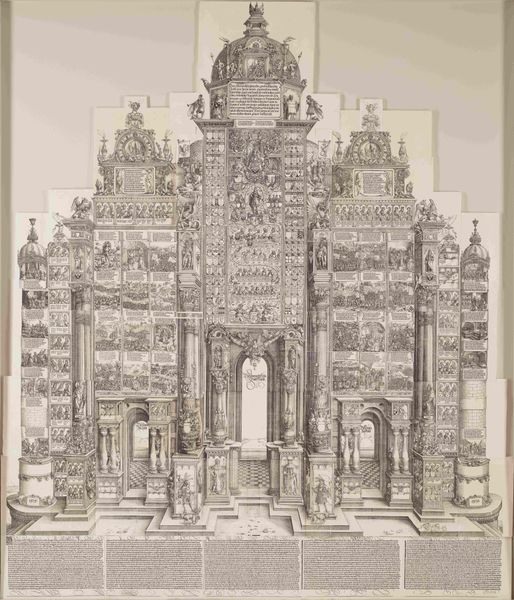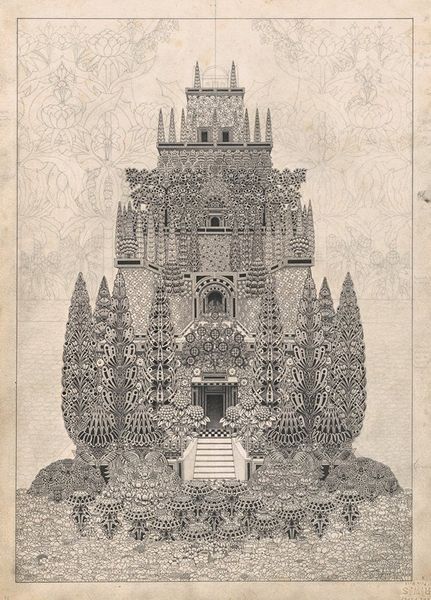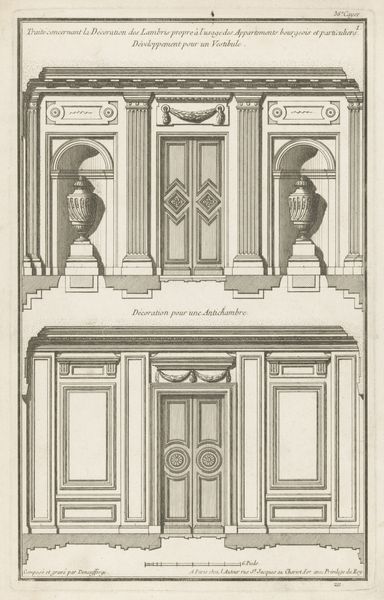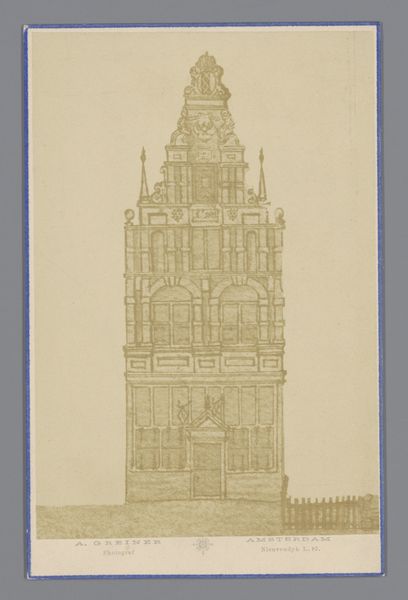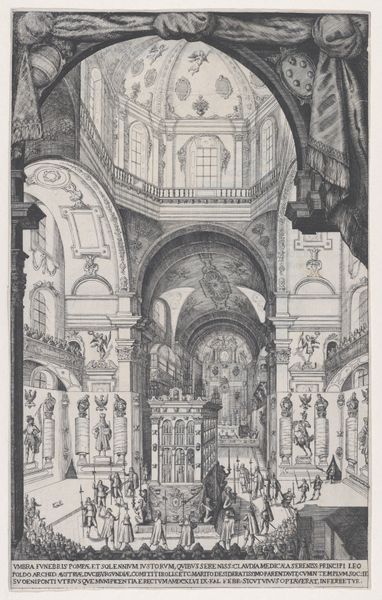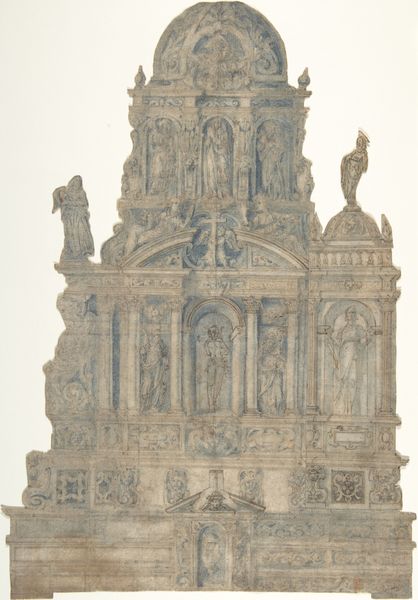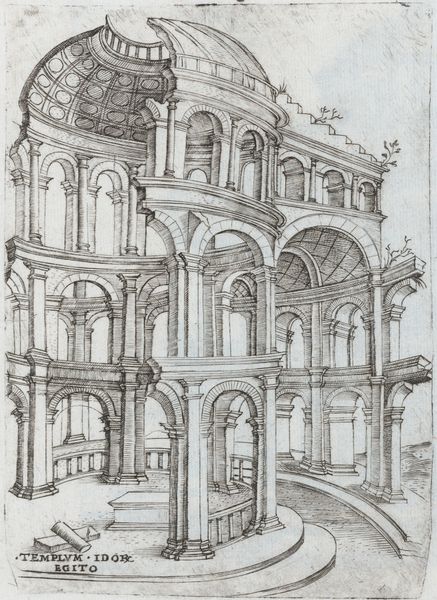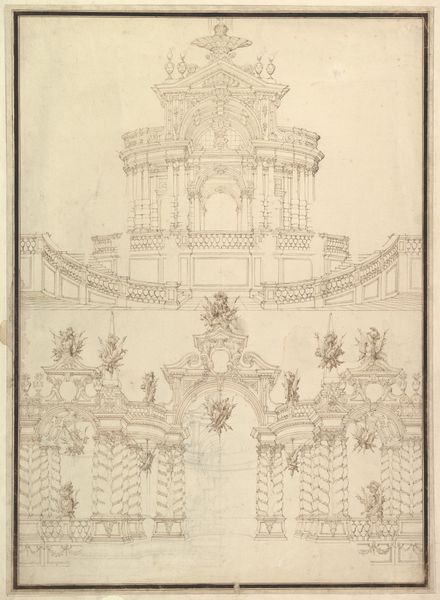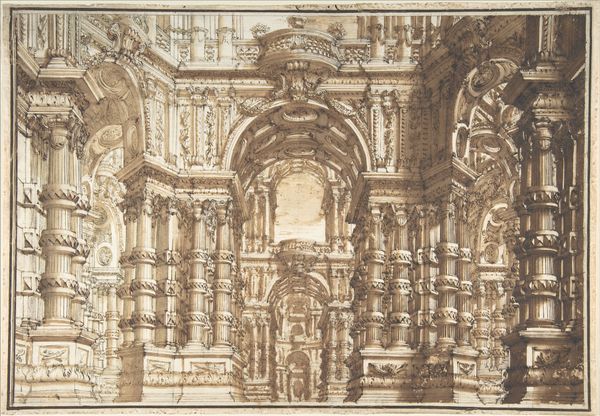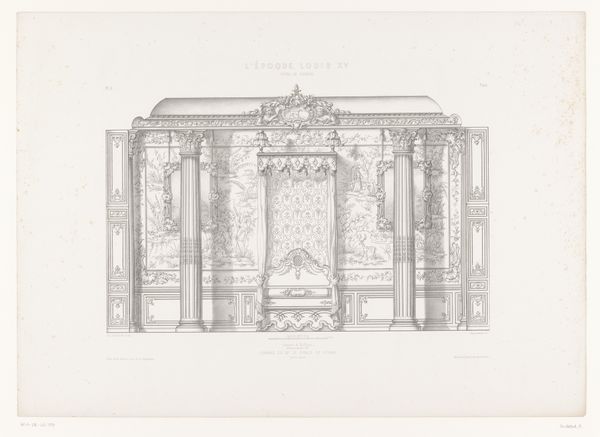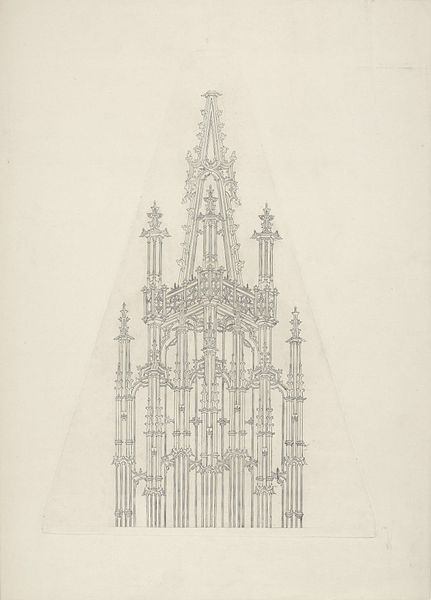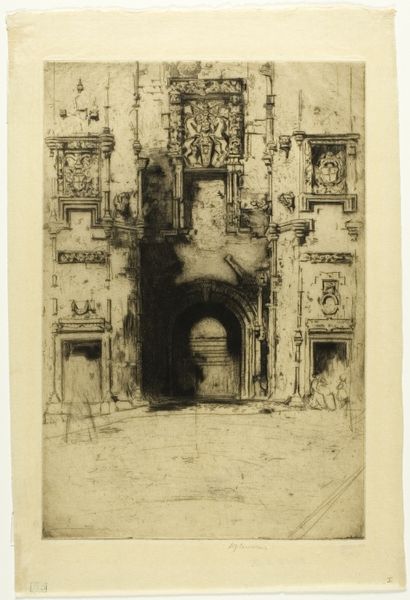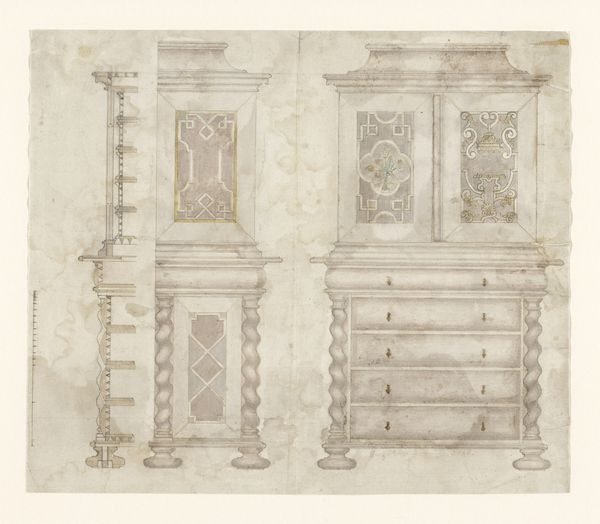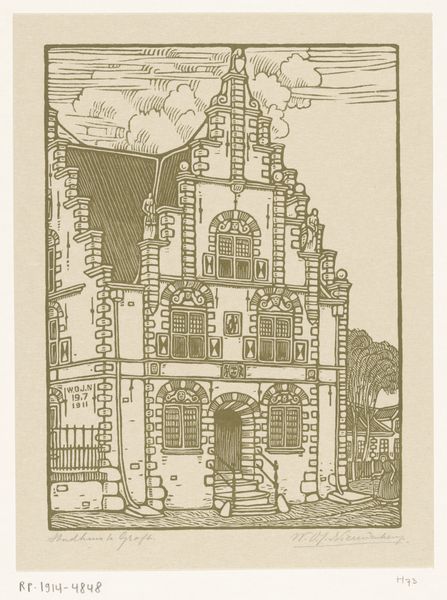
drawing, print, engraving, architecture
#
architectural sketch
#
drawing
#
building study
#
architectural landscape
# print
#
historic architecture
#
site analysis
#
sketchwork
#
arch
#
architectural section drawing
#
architectural drawing
#
architecture drawing
#
architectural proposal
#
history-painting
#
northern-renaissance
#
engraving
#
architecture
Dimensions: size of sheets over: ab. 18 x 24 1/2 in. (45.7 x 62.2 cm)
Copyright: Public Domain
Curator: This intricate piece is Albrecht Durer’s "Arch of Honor," dating from 1515 to 1518. It's currently held at the Metropolitan Museum of Art. Editor: Wow, it looks incredibly detailed. I’m struck by the sheer amount of textual information surrounding these architectural depictions. The amount of engraved language overwhelms the structure. Curator: Absolutely, this was conceived not merely as a piece of art, but as a work of political propaganda meant for Maximilian I, Holy Roman Emperor. Editor: So, it’s as much about the image it projects as the paper and ink it's composed of? The process here being crucial in understanding its socio-political use? I’m looking at it and trying to imagine how something like this was conceived, designed, printed, and then distributed to disseminate specific information. Curator: Exactly. It's a giant print made up of numerous individual sheets that were designed to glorify Maximilian and his reign by depicting his ancestry, military achievements, and dynastic aspirations. It was meant to be displayed publicly. Editor: What stands out for me is how Durer integrated traditional printmaking processes to essentially manufacture and disseminate propaganda at an unprecedented scale. He transformed his craft into an ideological weapon. Curator: A fascinating observation. And let’s not overlook the classical references and humanist elements interwoven into its architecture. Durer was building upon traditions to craft something overtly political. It also mirrors contemporary obsessions with imperial grandeur and family history; it also legitimizes power. Editor: Thinking about Durer's labor alongside the paper production, the engraving tools, the printing press, it really highlights how technological innovations became fundamental in manifesting these grandiose, political aspirations of empire building and ideological dissemination. It moves beyond aesthetic contemplation and asks to think about material production. Curator: Indeed, a piece of incredible depth and a historical object of importance to understand not just the Renaissance but how empires seek to immortalize themselves through art. Editor: Looking at it now, understanding all that we do about its construction, labor and intent, really shifts how I engage with not just the images on its face but everything supporting its creation.
Comments
No comments
Be the first to comment and join the conversation on the ultimate creative platform.
